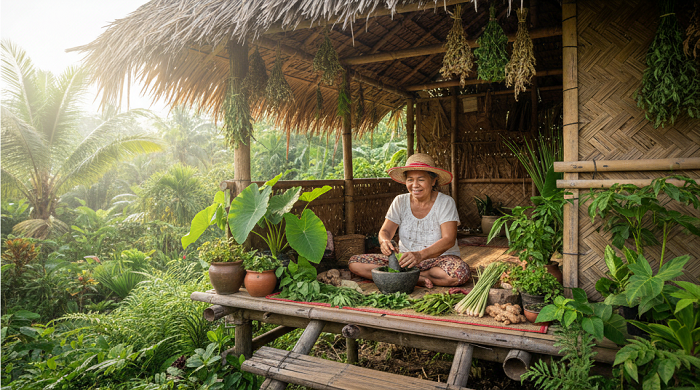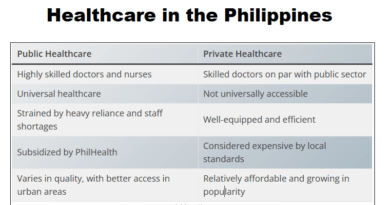Traditional Filipino Medicine: Discover Its Healing Power
For centuries, traditional Filipino medicine has shaped the way Filipinos approach health and healing. Long before hospitals and drugstores existed, our ancestors turned to nature — using herbal plants, massage, and prayer to restore wellness and balance.
Today, these ancient healing practices continue to thrive, offering a bridge between modern medicine and Filipino cultural wisdom.
Understanding Traditional Filipino Medicine
Traditional Filipino medicine is a holistic approach to healing that goes beyond treating symptoms. It combines natural remedies, spiritual faith, and ancestral knowledge to promote total well-being.
At its core lies the belief that the body has an innate ability to heal itself, and that this healing is supported by maintaining balance with nature and the spiritual world.
Generations of herbolarios, manghihilot, and albularyos have preserved this knowledge, using the earth’s gifts — from roots and herbs to oils and rituals — to heal both body and soul.
Core Principles of Filipino Healing Practices
Traditional Filipino medicine is guided by a few core principles:
- Balance and Harmony: Illness comes from imbalance in body, mind, or spirit.
- Natural Healing: Remedies are derived from plants, minerals, and spiritual rituals.
- Holistic Wellness: True healing considers physical, emotional, and spiritual health.
- Community and Faith: Healing involves prayer, compassion, and collective support.
These beliefs make Filipino traditional medicine both practical and deeply spiritual.
The Benefits of Traditional Filipino Medicine
1. Natural and Safe Remedies
Filipino herbal medicine relies on locally available plants that have been used for generations. The Department of Health (DOH) recognizes several medicinal herbs for their scientifically proven effects, such as:
- Ginger (Luya) – For colds and sore throat
- Lagundi – For cough and asthma
- Sambong – For kidney health
- Guava (Bayabas) – For wound disinfection
- Turmeric (Luyang Dilaw) – For inflammation and detox
Because these remedies are natural, they are generally safer and less likely to cause side effects compared to synthetic medicines.
2. Accessible and Affordable
In rural areas of the Philippines, many families rely on herbal remedies and hilot because they are affordable and easy to prepare.
A simple example: boiling guava leaves for wound cleaning or gargling helps prevent infection — a traditional solution that costs little to nothing.
This accessibility makes traditional medicine a lifeline for many Filipinos, especially where healthcare facilities are far away.
3. Works Hand-in-Hand with Modern Medicine
Traditional Filipino medicine isn’t meant to replace modern medicine — it complements it.
Today, DOH-approved herbal supplements such as lagundi, sambong, and tsaang gubat are available in pharmacies. Doctors often recommend them as natural alternatives or supportive treatments.
This integration of science and tradition reflects the Philippines’ growing commitment to holistic healthcare.
Popular Traditional Healing Practices in the Philippines
1. Hilot (Traditional Massage Therapy)
Hilot is a signature Filipino healing art that uses massage to restore the body’s natural energy flow. The manghihilot identifies “lamig” (cold spots) or “pilay” (sprain) and applies pressure and herbal oils to relieve pain and stress.
Today, hilot is recognized by the Department of Health and Department of Tourism as part of the country’s wellness heritage — a perfect blend of tradition and relaxation.
🖼️ Suggested Image: A manghihilot performing a traditional massage using coconut oil and warm herbal compresses.
Alt text: “Manghihilot performing traditional hilot massage in the Philippines.”
2. Herbal Medicine
Herbal medicine remains the foundation of Filipino traditional healing. The DOH and PITAHC (Philippine Institute of Traditional and Alternative Health Care) have approved several plants for medical use:
| Herbal Plant | Local Name | Main Use |
|---|---|---|
| Lagundi | Lagundi | Cough, asthma |
| Sambong | Sambong | Kidney stones, UTI |
| Tsaang Gubat | Wild Tea | Stomach pain, diarrhea |
| Bayabas | Guava | Wound cleaning, oral care |
| Ampalaya | Bitter Gourd | Diabetes |
| Niyog-niyogan | Rangoon Creeper | Intestinal worms |
These plants can be made into teas, capsules, or tinctures — offering safe, natural alternatives to chemical-based medicines.
3. Faith Healing and Spiritual Practices
For many Filipinos, faith and healing are inseparable.
Albularyos (faith healers) use prayer, herbal mixtures, and rituals to address illnesses believed to be caused by spiritual or emotional imbalance.
Whether or not one believes in the supernatural aspect, these rituals offer comfort, emotional relief, and community support — important elements of holistic health.
4. Acupuncture and Cupping Therapy
Influenced by ancient Chinese medicine, these techniques have also taken root in Filipino wellness culture:
- Acupuncture uses fine needles to stimulate energy flow and relieve pain.
- Cupping Therapy uses suction cups to improve circulation and reduce muscle tension.
Many wellness centers in Manila and Cebu now offer these treatments as part of integrated healing services.
The Future of Traditional Filipino Medicine
The Philippine government, through PITAHC, continues to promote research, education, and regulation of traditional medicine.
There’s growing global interest in Filipino healing practices, especially among those seeking natural, preventive, and holistic care. As younger generations rediscover these ancestral remedies, traditional medicine is poised to become a powerful ally in the modern wellness movement.
Conclusion: A Legacy of Healing and Hope
Traditional Filipino medicine is more than an old custom — it’s a living heritage of Filipino faith, resilience, and respect for nature.
Its continued relevance proves that sometimes, the best healing comes not from laboratories but from the wisdom of our ancestors. By preserving and integrating this knowledge with modern science, Filipinos can continue to build a healthier, more holistic future.




